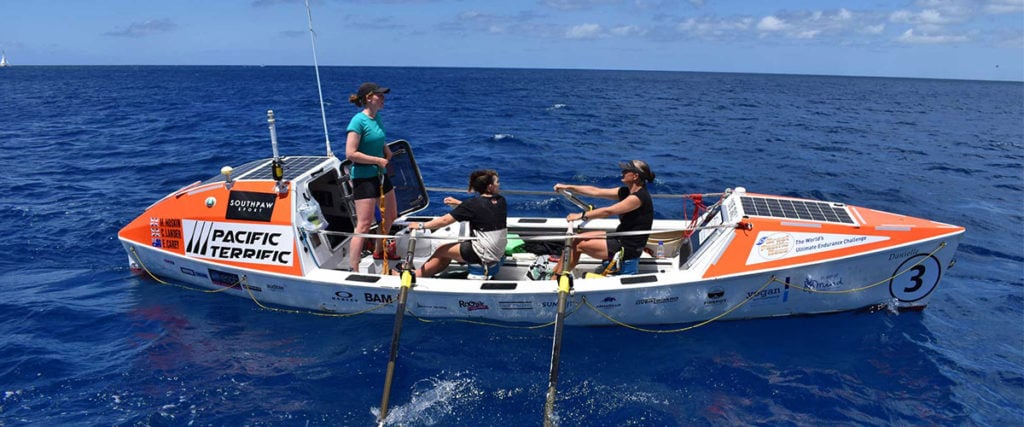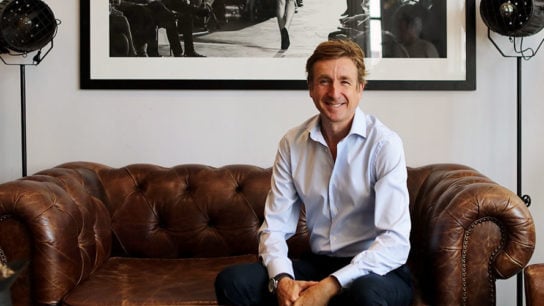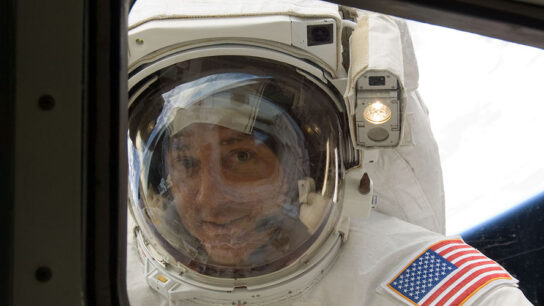Physiotherapist-turned-dual record-holding adventurer Eleanor Carey shares her learnings from rowing across the largest body of water on Earth in a 7.6-metre boat with two strangers.
After years of feeling stagnant in her career as a physiotherapist, Eleanor Carey decided to go on a long bike ride – 3000km through eight countries, to be exact – to clear her head and figure out her next move. Though the answer never came, she did fall in love with the physical and mental challenge of venturing into the unknown; a surprising turn of events for someone who “wasn’t very sporty as a kid”.
Eleanor’s next feat came three years later when she joined two strangers, English athletes Cazz Lander and Megan Hoskin, at the eleventh hour to compete in the 2018 Great Pacific Race after a crew member dropped out. Battling choppy waters, seasickness, and sleep deprivation, the ‘Pacific Terrific’ team spent 62 days, 18 hours, and 36 minutes rowing 4000km across the Pacific Ocean from California to Hawaii in a 7.6-metre boat powered by muscle alone. In the process, they set not one, but two world records for being the first crew of three (male or female) to make the crossing, and the youngest female crew of three to row any ocean in the world. Eleanor also became the first Australian woman to row the Pacific. Today, she is a motivational speaker, entrepreneur, and author who draws on parallels between the world of business and extreme outdoor adventure. We sat down with Eleanor to revisit the crests and troughs of her historic journey, her tips for staying resilient in the face of adversity, and what people get wrong about being an ‘adventurous person’.
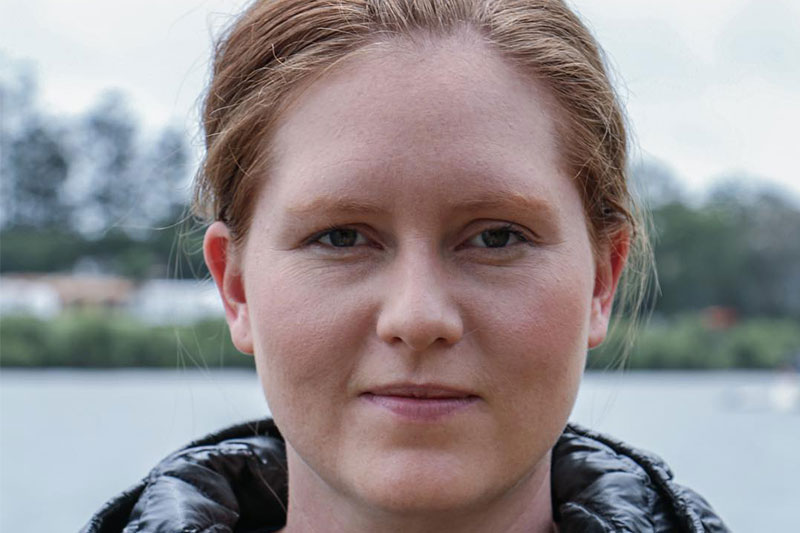
Growing up, was becoming an adventurer something that ever crossed your mind?
Not at all. I was a very well behaved, rule-following child – almost to my own detriment. I would have taken staying indoors with a book over going outside any day. I was never particularly sports gifted either. I went on to do physiotherapy at university because I wanted to help people and it was one of the few career options I was aware of that seemed like a good fit. Once I’d graduated and started practising for a couple of years, however, the learning process stopped and it began to feel a bit like ‘Groundhog Day’. I moved overseas to England in an attempt to mix things up and continued to work as a physio for the NHS. Around that time, I stumbled upon a book that would change my life called Cycling Home From Siberia by Rob Lilwall. It’s about these two guys who bought a one-way ticket to Siberia and then cycled all the way home to the UK again with snot icicles hanging off their faces. I remember reading this book and thinking, why hasn’t anyone ever told me that you were allowed to do this stuff? Why did nobody sit me down at school and say, “Hey, did you know you could fly halfway around the world and cycle back again, or hike across entire continents, or row across entire oceans?” It felt like I was really late to discovering this life option.
Is that what led you to plan your first human-powered long-distance journey, a 3000km cycle across Europe?
Yeah, I was originally going to cycle from Land’s End to John O’Groats (LEJOG), a popular route that traverses the length of the UK, but then started looking further out on the map at the Netherlands, Germany, Denmark, and Sweden. I think it took three days to percolate from “let’s cycle England” (which had been one year of on-and-off planning in the making) to “let’s cycle across Europe”. I booked a one-way flight to Norway where I’d be starting and burst into tears as soon as the confirmation email hit my inbox. I was petrified. I had no idea of what I was getting myself into or if I was actually capable of cycling that far. But I did know one thing for sure: even if I only made it two days down the road, I’d be so glad that I tried when I’m 90 and in a nursing home.
Let’s talk about the Great Pacific Race. What made you decide to undertake this momentous journey across the Pacific Ocean?
I knew that people rowed oceans, but it always sounded horrendous to me until I watched Losing Sight of Shore, a documentary on Netflix that tells the story of four British women who rowed across the Pacific from America to Australia. Within 10 minutes of the credits rolling, I’d googled ‘ocean rowing crews’ and sent off an email to a team called ‘Pacific Terrific’ asking if I could join them. At that point, I hadn’t even considered the financial aspect, fitness, or the fact that I had no ocean rowing experience whatsoever. It was just a case of asking the question and dealing with the answer if and when it came.
They eventually got back to me with: “Our crew is currently full, but we’ll put you on the reserve list.” To be honest, I thought they were just rejecting me really politely, so I went on my merry way and forgot all about it. It was only about eight weeks until the actual race start in California when Cazz and Meg emailed me to say their crew member had dropped out and to ask if I was still interested.
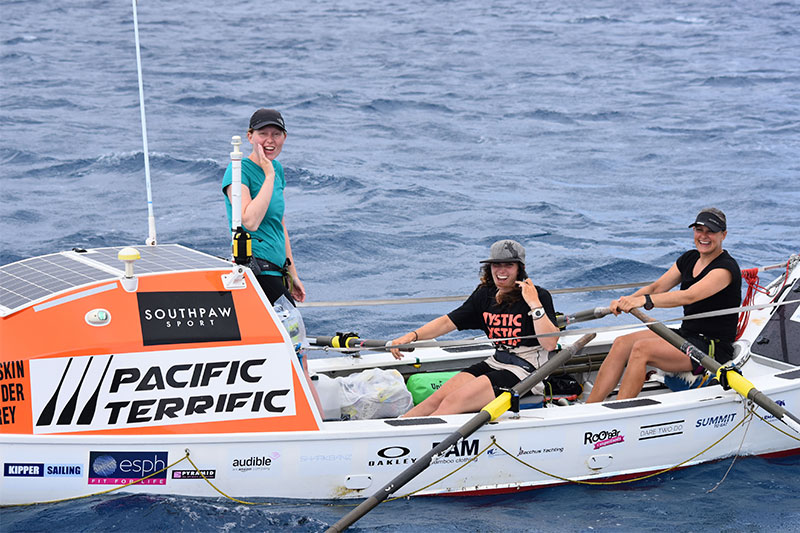
What happened next?
My heart was pounding and I felt sick to my stomach when I read the email, but I knew 100% that I had to say yes. But a lot of the logistics still weren’t clear. There were six technical courses I had to complete before I would be allowed to begin the race at all, including Safety & Sea Survival, California Boating Licence, Start Skippering (Australian Sailing), Long Range Operator Certificate of Proficiency (LROCP), First Aid, and a 40-hour Yachtmaster Theory course. Due to limited availability, we didn’t know if it was physically possible for me to get them done in such a short space of time. I was also waking up at 5am every day on top of that to hit the gym and spend an hour on the ‘erg’ (indoor rowing machine), so it was very stressful to say the least.
What did that first day on the boat feel like?
There were lots of tears the day I got on the boat. I’d spoken to my partner Kat, my parents, and a couple of friends from home beforehand, but there were countless moments when I had to ask myself, ‘Am I really doing this?’ What spurred me on was the thought that I wasn’t committing to the entire journey. I was just saying ‘yes’ to the next tiny step in the chain because that was all that felt doable then. It was a similar decision process to cycling across Europe in that it didn’t matter if I only managed a few days on the boat. At least I’d find out about this thing that had intrigued me since I first watched the documentary.
Can you give us an insight into what the day-to-day life on a boat like that looks like?
We did rotating shifts of three hours on, three hours off throughout the journey. During my first hour, Meg and I would row together; then she would finish and I would row my second hour alone; and then on my last hour, Cazz would join me. So, we each rowed alone for one-third of the time. When we weren’t rowing, we were boiling water, making food, cleaning the hull, receiving waypoints from Stokey (our weather router in the UK) to make sure we stayed on track, and of course, trying to sleep. There’s really only a one-hour period when people aren’t moving in and out of the cabin, so sleep deprivation builds up. Privacy basically gets thrown out of the window because the boat is tiny. Our toilet was a rubber bucket that you just emptied over the side, so I guess you could say we bonded pretty quickly! It was also a case of breaking down emotional barriers. When you’re in such a confined space, you have to be totally honest with how you’re feeling because they’re going to see it anyway, whether you tell someone or not.
What was the hardest part of your journey?
Two really difficult moments come to mind. The first one happened before I even got on the boat, during my Sea Safety Survival course in Sydney. At briefing, the instructors told us that if you fell overboard from a sailing vessel (which has sails and a motor) at night, you had less than a 5% chance of survival. That chance is significantly lower on a non-motorised ocean rowing boat where you can’t make any backwards progress. I realised, then and there, that this journey was a life-and-death matter and cried for hours that night. I had to ask myself, ‘Are you being really brave or really stupid right now?’
The second one happened after the race started. Everyone had reassured me that the seasickness would last 5 days tops, but I was vomiting the whole way to Day 21. I couldn’t hold a single meal down until Day 17 and experienced severe stomach and kidney pain, as well as dehydration and sleep deprivation. It took an extreme toll on my body, to the point where I was almost medically evacuated. It was absolutely horrific – but I did not miss a rowing shift once.
[Editor’s Note: Eleanor’s diary entries from the row are available on Instagram.]

In the face of extreme physical pain, what kept you going?
Maybe ‘intense curiosity’ doesn’t sound like a strong enough driver, but it was for me. Even though it was scary, I wanted to see just how far I could push the limits of my body and mind. I’m a firm believer that you’re not capable of doing something until you’ve done it. You can’t build the muscle, mindset, and grit it takes to row across an ocean until you’ve put yourself in a boat and rowed across an ocean.
This was definitely not a solo effort, though. I’m so grateful for Meg and Cazz’s support, and the letters from home I got to take with me. I had around seven letters in total and spread them across the journey to savour. When I was struggling with seasickness, a letter from Aaron Birkby, a dear friend and mentor of mine, played an especially large role in getting me through that moment of darkness.
You’ve previously described the row as ‘the ultimate exercise in delayed gratification’. How did you learn to manage your impulses?
On land, if I was having a bad day at work, I would rely on motivators like, “I can go out for a drink with friends tonight” or “I can sleep-in on the weekend”. But out there in the middle of the ocean, I had none of that. No going out for drinks or lie-ins. No hot showers or watching movies in bed. I couldn’t even go for a walk to get away from people. There was just this relentless salty, painful, wet, cold, hot, blistered, nauseous, hungry, bruised, sleepless life.
In tough situations like these, you need to be good at identifying exactly what you need to get through a particular moment. One thing that really helped me do that was the Love Languages test, which looks at the five ways we feel and express love: words of affirmation, physical touch, acts of service, receiving gifts, and quality time. Physical touch was a huge one for me, so if all I needed was a hug, I would go and ask somebody for a hug. I also had ‘Pepperoni Days’ every week and ate Oreos to reward myself. When your world is smaller, the ‘little things’ become bigger.
What tips do you have for dealing with uncertainty and negative self-talk?
I definitely struggled with overthinking and negative self-talk on the boat, and it’s something I may continue to struggle with for the rest of my life. But if I could break it down, these three ideas helped me the most:
1. Intercept negative self-talk with reason
Bring it back to the present moment and come up with actual arguments to disprove it. If that awful voice inside your head is telling you you’re worthless or stupid, what are the evidence points that say otherwise? I find it also helps to ask yourself, ‘Would I say this to a friend?’ More often than not, the things we tell ourselves are much harsher than anything our worst enemy would ever say, so try to reframe those emotionally-charged statements in a more logical and reasonable voice.
2. Everything is temporary
Chris Martin, founder and director of the Great Pacific Race, said something before we left that I found really profound: “When the times are good, enjoy it because it will not last. And equally when the times are bad, know that they too will not last.” We can’t sit here being afraid of things that might happen all the time because it steals the joy from the present moment where things hopefully aren’t going wrong. All we can do is take things as they come, one step at a time.
3. It’s okay to feel mixed emotions
There is a societal expectation that you can only experience one strong emotion at a time. Either you’re loving it, or you’re hating it. But what I’ve come to realise in all of my adventures is that you can experience fear and doubt and sadness and loneliness at the same time as joy and awe and excitement. We’re so complex as human beings that we don’t have to be sitting singularly in a boat of negative emotion or positive emotion. Likewise, sitting in one or the other is not an indicator of your success. Being scared does not mean you won’t succeed.

We’ve talked about the gruelling parts. What were some of the highlights of your rowing adventure?
There were so many incredible highlights out there, but one of my favourite moments to date took place around three weeks in. We’d hit this really calm part of the ocean where there were no waves, almost like a lake, and I remember looking around and going, ‘Look at where I am. I’m in the middle of the Pacific, rowing a boat at 3:30 in the morning, and there’s no one for hundreds of miles.’ It’s the most bizarre thing when you think about it, but I felt so blissfully happy; so completely calm and in control. And I knew then that if I could be happy here with none of my usual comforts, I could be happy anywhere, doing anything.
In spite of this extraordinary feat, you and your crewmates still describe yourselves as “everyday women”. What are some of the biggest misconceptions about being an ‘adventurer’?
I think the biggest misconception people have is that you need to be born a certain way – and this applies to almost anyone you put on a pedestal, whether it’s an adventurer or business person. I always used to believe that an adventurer had to be a big burly man who was completely emotionally stable and sure of themselves 100% of the time. And then there was me: a pale, ginger woman who cries at the drop of a hat and gets sunburned sitting under a tree in the shade. I’d never camped alone or done anything in that realm, and so I thought I wasn’t ‘allowed’ to be an adventurous person. That’s why I’m so grateful to all the adventurers who came before me and shared their stories. When I read that Alastair Humphreys cycled around the globe and cried most of the way across Europe because he wasn’t sure of what he was doing, it was like something clicked inside me. Cycle and cry? Now, that I could do. I realised that I was allowed to be unsure, I was allowed to figure it out as I went along and still go on an epic adventure.
I’ve had lots of people come up to me and say, “Oh, I could never row across an ocean.” But I don’t believe them. I genuinely believe that if we threw the majority of people into an ocean rowing boat and told them they had to get to the other side, more would rise to the challenge than they give themselves credit for. Again, I didn’t step into the boat as somebody who was capable of rowing across an ocean. I just woke up and rowed for a bit, then I woke up the next day and rowed a bit more. When you stack up those attempts enough times in a row, you’ll find that you’ve completed something that was seemingly insurmountable at the start. So show up with whatever you have, wherever you are. Your past is not the predictor of your future.
Not everyone is in a position to row across an ocean or cycle for thousands of miles, but you’re a huge advocate for ‘microadventures’. Can you tell us about what that entails, and the benefits of going on one?
The term ‘microadventure’ was coined, again, by Alastair Humphreys and defined as ‘an overnight outdoor adventurer that is close and achievable, for everyday people with real lives’. Like you said, going off and spending two months in the middle of the Pacific Ocean isn’t realistic for most people, so what a microadventure does is enable you to experience that same sense of accomplishment anytime – even midweek! You can leave your work at, say, five o’clock on a Tuesday afternoon, find some green space, like a national park, within an hour or so of where you live, hike or cycle a little (or even just camp next to your car – it doesn’t matter!), and stay for the night. Then wake up, watch the sunrise, pack down, and head back to your desk for nine o’clock on a Wednesday morning. You’ll feel like you’ve had a weekend in the middle of the week.
I’m actually in the process of building a microadventures course for corporates as a tool to help improve wellbeing and self-confidence. So, that should hopefully be launching within a month!
Any big adventures on the horizon?
Obviously, our international travel situation isn’t great at the moment, so I don’t have any big adventures lined up just yet. But I think the next thing I really want to do is go on a one to two-month hiking journey across countries. I’ve gone on hiking trips before, but never longer than four days, so I’m really curious about what it would be like to spend that much time immersed in nature. In a way, it’s similar to the remoteness of the row, but also totally different.
To learn more about Eleanor and her upcoming projects, visit eleanorcarey.com.
Related Articles
Off the Grid: Polar Explorer Ben Saunders Defines His Limit-Defying Career
One NASA Astronaut’s Unlikely Journey: Mike Massimino on Achieving the Impossible
